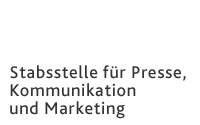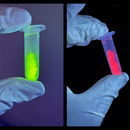Executive Department for
Press, Communication and Marketing
Adolf-Reichwein-Straße 2a Gebäude AVZ (Gebäudeteil AR-NA) 57068 Siegen
Phone: +49 (0)271/740-4915 Fax.: +49 (0)271/740-4911 E-Mail: presse@uni-siegen.de
Rapid test for antibiotic-resistant germs
Globally, antibiotic-resistant bacteria are considered one of the biggest health problems. Researchers at the University of Siegen are developing NAPARBA, a nanotechnology-based approach to rapidly detect disease-causing bacteria.
The current COVID pandemic clearly demonstrates how important well-functioning rapid tests are in medical diagnostics. However, such tests are not yet available for all types of pathogens. As part of the NAPARBA project, scientists from the University of Siegen are working with partners from the Indonesian Institute of Sciences (LIPI) and Koç University (KocU) in Turkey to research a new approach to rapidly detect antibiotic-resistant bacteria.
"Antibiotic-resistant bacteria are considered one of the biggest health problems worldwide today. This usually involves methicillin-resistant Staphylococcus aureus (MRSA)," explains Prof. Holger Schönherr, who coordinates the project at the Center for Micro- and Nanochemistry and Engineering (Cm) at the University of Siegen. The need for new antimicrobial agents and rapid detection methods is correspondingly great. However, state-of-the-art screening methods are usually expensive, require laboratory facilities as well as trained personnel, and are not widely used to enable, for example, targeted antibiotic administration.
"As part of our NAPARBA research project, we are developing a novel rapid test that will detect both specific bacteria and their resistance to antibiotics," Schönherr said. NAPARBA stands for nanoparticle-based point-of-care detection of antibiotic-resistant bacteria. "In terms of handling, this works similarly to an antigen test. For this, you take a swab, for example, in the nose or from a wound." Special nanoparticles then dock onto the bacteria's DNA in a liquid. To do this, the researchers efficiently use luminescent nanoparticles with magnetic properties. These are used to enrich in the solution and provide evidence of pathogenic bacteria such as MRSA.
In the future, this will make it possible to detect bacteria and their resistance that can cause health problems in patients within just a few minutes. Among other things, MRSA and other germs tend to accumulate on implants in the body – such as artificial heart valves or joints, pacemakers and catheters. The consequences of infection range from skin diseases to inflammation of individual organs to multi-organ failure in toxic shock syndrome. "The particular advantage of our nanoparticle-based test is that it will be usable everywhere," Schönherr said. "It doesn't require electricity or technical tools, so it can be used in hospital admissions as well as in remote regions and developing countries, providing information about the spread of resistant bacteria." Development of a prototype of the NAPARBA rapid test is planned for 2023.
Contact:
Prof. Holger Schönherr
Physical chemistry
Tel. 0271 740-2806
E-Mail:
schoenherr@chemie.uni-siegen.de


